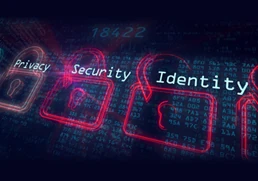
In today’s rapidly evolving cybersecurity landscape, internal threats are on the rise, making it imperative for organizations to dig deeper into their defences. Authenticated Vulnerability Assessments (VAs) are no longer optional but a must-have tool in your security arsenal. Here’s why understanding and implementing this advanced assessment can make all the difference.
What is Authenticated Vulnerability Assessment ?
An Authenticated Vulnerability Assessment is a type of security scan where the scanning tool is provided valid credentials—such as a username and password—to access and evaluate the internal components of your system. Think of it as a health check where the doctor doesn’t just examine you externally but also runs tests to check your vitals. Similarly, an authenticated scan digs deeper into your system, assessing configurations, user permissions, and installed software to uncover vulnerabilities that a basic external scan might miss.
Why is Authenticated VA Required?
Attackers often target internal vulnerabilities—weaknesses within your network that can be exploited once they gain some level of access. Authenticated VA is crucial because it provides:
- In-Depth Analysis: A thorough inspection of your system’s internal workings, uncovering vulnerabilities that external scans might overlook.
- Accuracy and Reliability: By accessing the system with credentials, authenticated scans reduce false positives, ensuring that the identified vulnerabilities are genuine and actionable.
- Proactive Defence: Identifying and mitigating internal vulnerabilities helps build a more resilient security posture, preventing potential breaches before they occur.
What is Required to Perform an Authenticated VA?
Before diving into an authenticated VA, there are several prerequisites and considerations to ensure the scan is both effective and secure:
- Valid Credentials: You’ll need to provide the scanner with valid credentials (e.g., username and password) that have the necessary permissions to access various parts of the system. It’s important to use credentials with the least privilege necessary to perform the scan, reducing the risk of misuse if they’re compromised.
- Secure Credential Management: Credentials used for the scan should be handled securely. This involves storing them in encrypted formats and possibly rotating them before and after the scan to maintain security.
- Access Controls: The scanning tool must be configured with appropriate access controls. It should be allowed to reach all relevant parts of the system while ensuring that its actions are logged and monitored.
- System and Network Configuration: Ensure that the system and network settings allow the scanner to authenticate and access the internal environment without interference. This may require adjusting firewall settings or network segmentation temporarily during the scan.
- Resource Allocation: Authenticated scans can be resource-intensive, so it’s important to allocate sufficient system resources to handle the scan without significant impact on performance. Planning the scan during off-peak hours might be beneficial.
- Compliance with Internal Policies: Make sure the authenticated VA aligns with your organization’s internal security policies. This includes ensuring that the use of credentials and the scope of the scan are within policy guidelines.
Use of Authenticated VA in PCI Compliance
For organizations handling payment card information, maintaining PCI DSS (Payment Card Industry Data Security Standard) compliance is non-negotiable. PCI DSS requires rigorous security measures to protect cardholder data, and Authenticated Vulnerability Assessments play a vital role in this process:
- Requirement 11.2.1: PCI DSS mandates that organizations conduct internal vulnerability scans at least quarterly and after any significant change in the network. Authenticated VA is often recommended to meet this requirement as it provides a deeper analysis of internal systems.
- Reduced Risk of Non-Compliance: Authenticated VA helps organizations identify and address internal vulnerabilities that could otherwise lead to compliance failures, hefty fines, and reputational damage.
- Demonstrating Due Diligence: Regularly performing authenticated scans shows that your organization is committed to maintaining the highest security standards, which is essential for passing PCI DSS audits.
Difference Between Normal VA and Authenticated VA
While both Normal (or Unauthenticated) VA and Authenticated VA aim to identify vulnerabilities, they differ significantly in scope and depth:
- Normal (Unauthenticated) VA: This type of assessment scans your system from the outside, similar to how an attacker with no special access might probe your network. It’s effective for identifying external vulnerabilities like open ports, weak web applications, and exposed services.
- Authenticated VA: In contrast, authenticated VA operates from within the system. With credentials, it can access internal configurations, inspect installed software versions, and review user permissions. This scan type uncovers deeper, often more critical, vulnerabilities that unauthenticated scans may miss.
Challenges Faced During Authenticated VA
Despite its advantages, conducting an Authenticated Vulnerability Assessment is not without its challenges. Here are some of the common issues you might encounter:
- Credential Verification and Authentication Failures: One of the most critical aspects of an authenticated VA is ensuring that the provided credentials are correct and valid. Issues like "Target Credential Status by Authentication Protocol – Failure for Provided Credentials" can arise if there’s a mismatch between the credentials configured for the scan and those required by the target system. Ensuring accurate credential input and verification is essential to avoid such failures.
- SSH Key Management Issues: When using SSH keys for authentication, tools like Nessus may encounter difficulties in loading the private key, especially if the associated passphrase is incorrect or if the key format is incompatible. This challenge often described as "Nessus failed to load the SSH private key. Is the associated passphrase, correct?", requires careful management of SSH keys and passphrases to ensure successful authentication.
- Key Parsing Errors: Another technical challenge during an authenticated VA is the correct parsing of SSH keys. If the key format is unsupported or corrupted, you might see errors such as "Failed to parse the given key information." This issue highlights the importance of using standardized and compatible key formats and verifying key integrity before the scan.
- Credential Set Compatibility: Ensuring that the credential sets provided for the scan are compatible with the target system is critical. Issues like "Unable to login to remote host with supplied credential sets" can occur if there’s a misconfiguration or if the credentials do not have sufficient privileges. Properly testing and validating credentials prior to the scan can help mitigate this challenge.
Authenticated Vulnerability Assessment is an essential component of a robust security strategy. By providing a more detailed and accurate picture of your system’s vulnerabilities, it helps fortify defences against potential threats. While it comes with challenges, the benefits—especially in the context of PCI compliance and overall security—make it a critical practice for organizations that prioritize cybersecurity.
Ready to enhance your security posture with an authenticated vulnerability assessment?
Contact QRC today for a consultation or learn more by joining our upcoming webinar on advanced security strategies.
Author : Geetesh M | Manager - Security

 +91 9594449393
+91 9594449393 +1 4847906355
+1 4847906355 +63 9208320598
+63 9208320598 +44 1519470017
+44 1519470017 +84 908370948
+84 908370948 +7 9639173485
+7 9639173485 +62 81808037776
+62 81808037776 +90 5441016383
+90 5441016383 +66 993367171
+66 993367171 +254 725235855
+254 725235855 +256 707194495
+256 707194495 +46 700548490
+46 700548490


